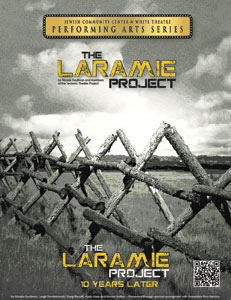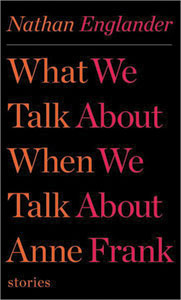Random acts of Jewish community
(Editor’s Note: Erin Margolin was one of 18 people, including two staff members, from the Jewish Federation of Greater Kansas City who attended TribeFest in Las Vegas late last month. TribeFest is Jewish Federations of North America’s conference for 21 to 45-year-olds, designed to engage, educate and inspire them to become active in the Federation system and in organized Jewish life.)
When my best friend, Meg Shaw, first mentioned TribeFest several months ago, I rolled my eyes and cut her off. “Oy and no,” I sighed. “I’ve got a new baby, I’m exhausted. And the twins…” I trailed off. Excuses are easy to find when you’re new to something or you’re secretly afraid. To her credit, Meg didn’t take no for an answer and kept nagging me to join her in Vegas for the conference. There was also the Jewish guilt prodding me along, chirping in my ear, “You’re the president of Temple Israel. You need to go, learn something, immerse yourself and spend some quality time with other Jews from KC.”
Eventually I capitulated, which wasn’t too hard, given that the Jewish Federation graciously subsidized the cost of my conference ticket; I shared a hotel room with Meg, and the direct flights on Southwest were convenient and cheap. I desperately wanted to bring something back to Rabbi Cukierkorn and our congregation, my fellow board members, my family, my community — even something just for me. Not anything tangible, mind you; instead, some wise and powerful message.
And you know what? I brought back so much more than I have the space to share with you. But one person stands out — Talia Leman, the CEO (Chief Executive Optimist) of Random Kid, a non-profit organization that leverages the power of youth to solve problems in the world. Talia hails from a small town in Iowa and began years ago as just that — a random kid. Now, at the age of 16, she’s won the National Jefferson Award, which is akin to the Nobel Prize for public service.
At the tender age of 10, Talia spearheaded a campaign to raise money for the Gulf Coast victims of Hurricane Katrina. She decided to trick-or-treat for coins instead of candy and enlisted her friends’ help, who then turned to their friends, and word quickly got around. A grocery store chain printed 8.5 million trick-or-treat bags in 13 states, and NPR and CNN got wind of Talia’s plan and interviewed her. Her initial fundraising goal? One million dollars (GASP!). But she didn’t raise that. She didn’t raise half a million dollars. She raised $10 million along with the help of other kids from all over the country.
When asked why she called it “Random Kid,” Talia explained, “Because when we believe in the power we each have, we have the greatest power of all.” She went on to say, “We need to be free enough and brave enough to take a step sideways, where the unexpected might happen.”
My takeaway? It’s time for me, my congregation, my family, you, all of us — to stop thinking that we alone have nothing valuable to contribute. It’s time to step up and do something, to effect change. To start a trend. What if we all made this promise to ourselves? Imagine what we could do for our Jewish community, for our families and for the entire world.
Last year the Jewish Federation of Greater Kansas City sent seven people to TribeFest. This year there were 18 of us, so more than double. Next year I’ll be going again and you should, too. Ask yourself how you can “step sideways” in our community. How can you get out of your rut, think outside of your own little box? How can you set off a ripple of change? I assure you it’s not necessary to raise $10 million dollars. Baby steps. It doesn’t have to be overwhelming!
Just promise me — no, promise yourself — that you will stop and think. I know from experience that it’s all too easy to hide behind our families, jobs and our kids’ extracurricular activities. But when you lie down in bed at night, what do you dream of as you’re falling asleep?
I dream of being someone like Talia Leman. My baby steps are small: I’m a J-LEAD member and the president of my synagogue, Temple Israel; I’ve taken Ayeka and B’not Kehila classes; I’ve co-chaired the Jewish Federation Women’s Division annual Note-A-Thon and participated in that project several times. Yes, I have three young children now, but what will my life look like in a few short years? Look out. Because I’m just a random kid too. A random kid who’s daring to dream big.
In addition to finding Erin Margolin volunteering at various organizations around Kansas City, you can find her blog at http://www.erinmargolin.com.



 In 1993, five years before Matthew Shepard was beaten and left to die, a rock was thrown through the window of a home displaying a menorah in Billings, Mont. The people of Billings rose in silent protest and paper menorahs appeared in windows all over town.
In 1993, five years before Matthew Shepard was beaten and left to die, a rock was thrown through the window of a home displaying a menorah in Billings, Mont. The people of Billings rose in silent protest and paper menorahs appeared in windows all over town. “What We Talk About When We Talk About Anne Frank” by Nathan Englander. (Knopf Doubleday Publishing Group,2012)
“What We Talk About When We Talk About Anne Frank” by Nathan Englander. (Knopf Doubleday Publishing Group,2012)